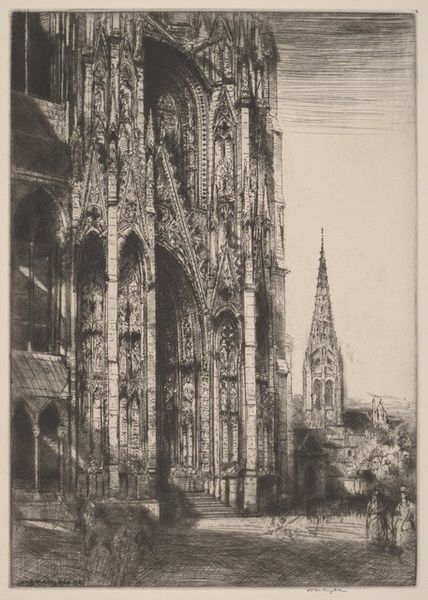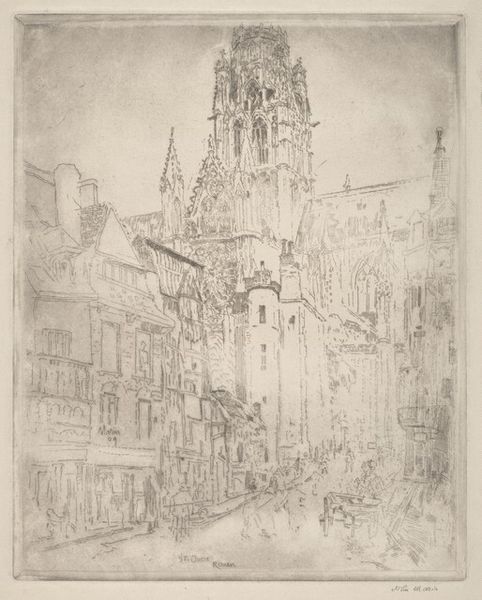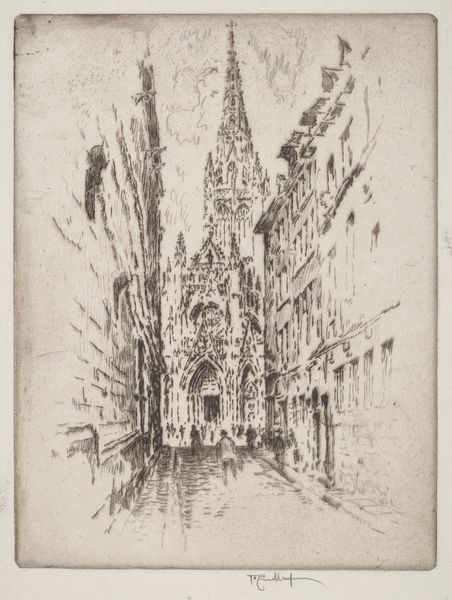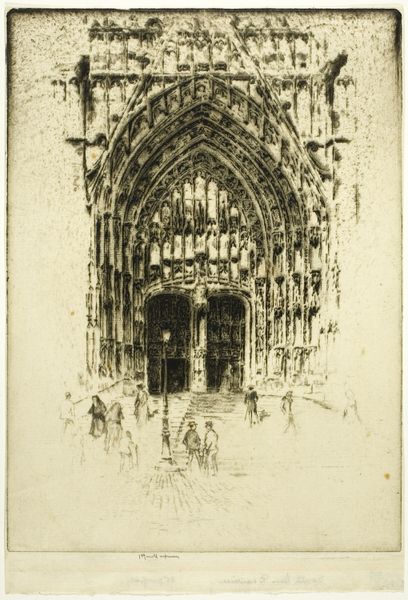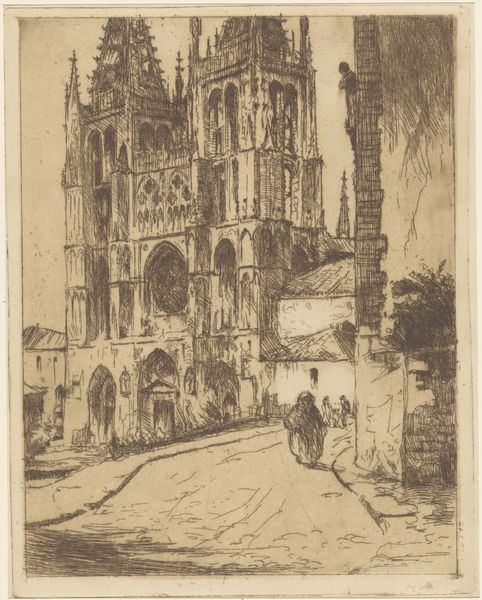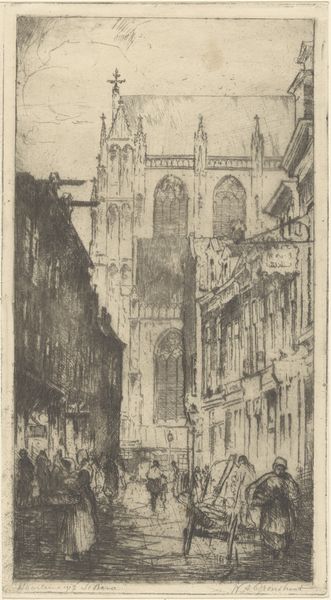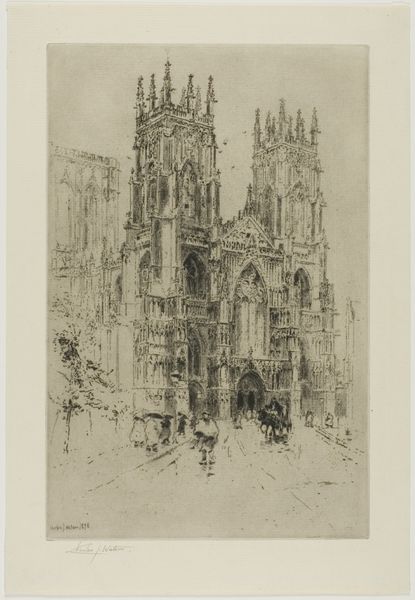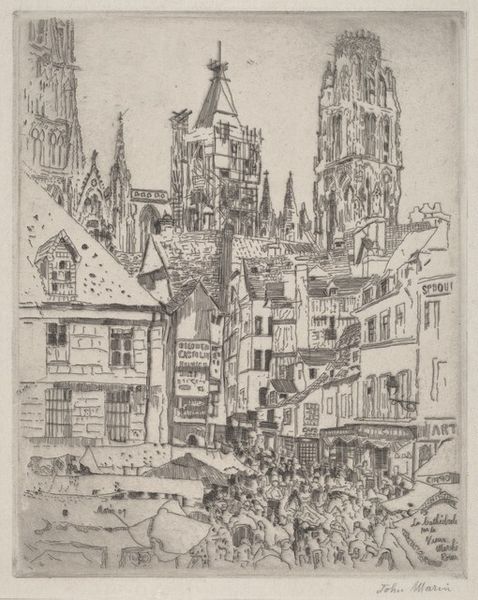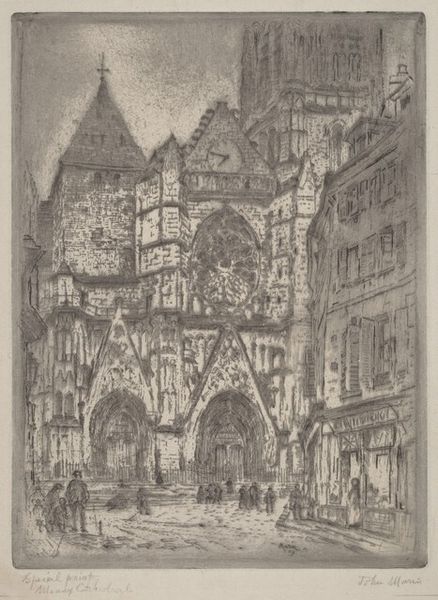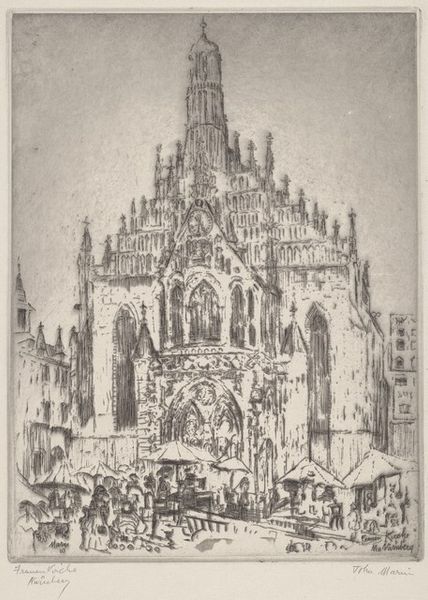
Dimensions: plate: 25 x 19.5 cm (9 13/16 x 7 11/16 in.) sheet: 33.9 x 25.8 cm (13 3/8 x 10 3/16 in.)
Copyright: National Gallery of Art: CC0 1.0
Editor: Okay, so this is John Marin's "Cathedral, Rouen," from 1909, made with etching and graphite. I’m immediately struck by how the architecture seems almost unstable, like it's vibrating or about to dissolve. What's your take? How do you interpret this work? Curator: It's interesting you say "unstable". I see that too. Marin's impressionistic technique here isn't just about capturing light, it reflects the shifting social and political landscape of the early 20th century. Cathedrals, historically symbols of stability and religious authority, are now being rendered in ways that emphasize dynamism, fragmentation, and the artist’s subjective experience. Consider the burgeoning modernist movement. Editor: So, he's deliberately breaking down that traditional representation? Curator: Precisely. He’s not just drawing a cathedral; he's questioning its fixed position in society. The etching medium itself, with its lines and gradations, suggests the passage of time and the ever-changing nature of urban experience. The loose rendering reflects a growing secularization of society, the public's shift away from institutionalized religion. Does the crowd in front of the building play into this narrative? Editor: Maybe, the crowd could reflect people going elsewhere, ignoring it… Is the cathedral starting to become obsolete? Curator: The question then becomes, who gets to define "sacred space," and what happens when those definitions shift? The Cathedral once reigned supreme over society, becoming increasingly democratized. This image reflects that the public plays an increasing role in society and how space is interpreted. It is something we should all continue to consider as time goes on. Editor: Wow, I hadn't thought about it that way, it adds so many more layers. I think I’m now ready to go see some of Marin’s watercolors and oils. Thank you. Curator: Of course. Thinking about the political and social history is a great starting point when looking at any art piece.
Comments
No comments
Be the first to comment and join the conversation on the ultimate creative platform.
